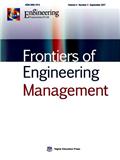
工程管理前沿(英文版)(Frontiers of Engineering Management) 知网目次万方目次维普目次
- CSCD
- AMI核心
- 高T2
- 主管单位:
中国工程院
- 主办单位:
中国工程院、高等教育出版社有限公司、清华大学、华中科技大学
- 国际刊号:
2095-7513
- 国内刊号:
10-1205/N
- 学科分类:
- 字数:
6000-62000
- 有无基金:
/有基金 100.0%
- 周期:
CN外文-季刊
- 特殊属性:
第一批认定学术期刊
- 电话:
027-87540191,010-58581429
- 邮箱:
见投稿指南处
- 复合因子:
0.935
- 综合因子:
0.457
- 收录:
知网目次,万方目次,维普目次
- 级别:
CSCD,AMI核心,高T2
期刊简介
《工程管理前沿》期刊已被查看: 次
更新频次
中频栏目:
REVIEW ARTICLE-33.3%-期平均发文量3篇
RESEARCH ARTICLE-66.7%-期平均发文量9篇
COMMENTS-66.7%-期平均发文量1篇
SUPERENGINEERING-66.7%-期平均发文量1篇
EDITORIAL-50.0%-期平均发文量1篇
低频栏目:
Special issue:Manufacturing engineering management-16.7%-期平均发文量13篇
2018年04期其他-16.7%-期平均发文量2篇
Special Issue:Systems Thinking in Construction-16.7%-期平均发文量13篇
2018年02期其他-16.7%-期平均发文量1篇
2017年04期其他-16.7%-期平均发文量1篇
单位占比
其他-100.0%一作占比
/有基金-100.0%投稿指南
1、投稿方式:在线投稿。
2、官网网址:http://journal.hep.com.cn/fem
https://link.springer.com/journal/42524
3、投稿系统:http://mc.manuscriptcentral.com/fem
4、官网邮箱:fem@hust.edu.cn
zhangln@hep.com.cn
patricia.hofrichter@springer.com
na.xu@springer.com
5、官网电话:027-87540191;010-58581429
6、出刊日期:季刊,逢季末月出版。
2024年4月18日星期四
《工程管理前沿(英文版)》投稿须知
【官网信息】
Frontiers of Engineering Management
INSTRUCTIONS FOR AUTHORS
August 1, 2023
General information
Frontiers of Engineering Management (FEM), supervised by the Chinese Academy of Engineering, administered by Higher Education Press, Tsinghua University and Huazhong University of Science and Technology and published jointly by HigherEducation Press and Springer in English in both print and online versions quarterly, provides a high quality international platform for the academicians, researchers and professionals in the broad field of engineering management to impart and share knowledge newly advanced and created, in the four main forms of research article, review, comments, and super engineering.
Types of Articles
The following types of articles can be submitted to the journal:
RESEARCH ARTICLE: Original research report.
REVIEW: An in-depth overview of certain topic or a review of the author’s own work or the work of one research group. The format and length of review articles are more flexible than a full article.
COMMENTS: A discussion/remark on an article, a view point, a book, etc. It should be within 1000–1500 words. In this case, the authors are allowed to respond toany comments.
SUPER ENGINEERING: An introduction to mega projects focusing on technological innovation and management innovation.
Duplicate/previous publication or submission
Manuscripts submitted to this journal must not be under simultaneous consideration by any other publisher and should not have been published elsewhere in substantially similar form. No part of a paper which has been published by Frontiers of Engineering Management may be reproduced or published elsewhere without the written permission of the publisher.
Ethical responsibilities of authors
This journal is committed to upholding the integrity of the scientific record. As a member of the Committee on Publication Ethics (COPE), the journal will followthe COPE guidelines on how to deal with potential acts of misconduct.
Authors should refrain from misrepresenting research results which could damage the trust in the journal and ultimately the entire scientific endeavor. Maintaining integrity of the research and its presentation can be achieved by following the rules of good scientific practice, which includes:
● The manuscript has not been submitted to more than one journal for simultaneous consideration.
● The manuscript has not been published previously (partly or in full), unless the new work concerns an expansion of previous work (please provide transparency on the re-use of material to avoid the hint of text-recycling (“self-plagiarism”).
● A single study is not split up into several parts to increase the quantity of submissions and submitted to various journals or to one journal over time (e.g., “salami-publishing”).
● No data have been fabricated or manipulated (including images) to support your conclusions.
● No data, text, or theories by others are presented as if they were the authors own (“plagiarism”).
Proper acknowledgements to other works must be given (this includes material that is closely copied (near verbatim), summarized and/or paraphrased), quotation marks are used for verbatim copying of material, and permissions are secured for material that is copyrighted.
Important note: The journal may use software to screen for plagiarism.
● Consent to submit has been received from all co-authors and responsible authorities at the institute/organization where the work has been carried out before the work issubmitted.
● Authors whose names appear on the submission have contributed sufficiently to the scientific work and therefore share collective responsibility and accountability for the results.
In addition:
● Changes of authorship or in the order of authors are not accepted after acceptance of a manuscript.
● Requests to add or delete authors at revision stage or after publication is a serious matter, and may be considered only after receipt of written approval from all authors and detailed explanation about the role/deletion of the new/deleted author. The decision on accepting the change rests with the Editor-in-Chief of the journal.
● Upon request authors should be prepared to send relevant documentation or data in order to verify the validity of the results. This could be in the form of raw data, samples, records, etc.
If there is a suspicion of misconduct, the journal will carry out an investigation following the COPE guidelines. If, after investigation, the allegation seems to raise valid concerns, the accused author will be contacted and given an opportunity to address the issue. If misconduct has been proven, this may result in the Editor-in-Chief’s implementation of the following measures, including but not limited to:
- If the article is still under consideration, it may be rejected and returned to the author.
- If the article has already been published online, depending on the nature and severity of the infraction, either an erratum will be placed with the article, or, in severe cases complete retraction of the article will occur. The reason must be given in the published erratum or retraction note.
- The author’s institution may be informed.
Disclosure of potential conflicts of interest
Authors must disclose all relationships or interests that could influence or bias the work. Although an author may not feel there are conflicts, disclosure of relationships and interests affords a more transparent process, leading to an accurate and objective assessment of the work. Awareness of real or perceived conflicts of interests is a perspective to which the readers are entitled and is not meant to imply that a financial relationship with an organization that sponsored the research or compensation for consultancy work is inappropriate. Examples of potential conflicts of interests that are directly or indirectly related to the research may include but are not limited to the following:
● Research grants from funding agencies (please give the research funder and the grant number)
● Honoraria for speaking at symposia
● Financial support for attending symposia
● Financial support for educational programs
● Employment or consultation
● Support from a project sponsor
● Position on advisory board or board of directors or other type of management relationships
● Multiple affiliations
● Financial relationships, for example, equity ownership or investment interest
● Intellectual property rights (e.g., patents, copyrights and royalties from such rights)
● Holdings of spouse and/or children that may have financial interest in the work
In addition, interests that go beyond financial interests and compensation (non-financial interests) that may be important to readers should be disclosed. These may include but are not limited to personal relationships or competing interests directly or indirectly tied to this research, or professional interests or personal beliefs that may influence your research.
The corresponding author collects the conflicts of interest disclosure forms from all authors. In author collaborations where formal agreements for representation allow it, it is sufficient for the corresponding author to sign the disclosure form on behalf of all authors. Examples of forms can be found here.
The corresponding author will include a summary statement in the text of the manuscript in a separate section before the reference list that reflects what is recorded in the potential conflicts of interest disclosure form(s).
Examples of disclosures:
Funding: This study was funded by X (grant number X).
Conflicts of Interest: Author A has received research grants from Company A. Author B has received a speaker honorarium from Company X and owns stock in Company Y. Author C is a member of committee Z.
If no conflicts exist, the authors should state:
Conflicts of Interest: The authors declare that they have no conflicts of interest.
Copyright transfer
No article can be published unless accompanied by a signed Copyright Transfer Statement, which ensures a transfer of copyright from author to publisher. A copy of the Copyright Transfer Statement to be used will be provided with the letter of acceptance of the manuscript. Authors are asked to scan and return by email or fax the signed statement to the editorial office of Frontiers of EngineeringManagement at the Academic Publishing Division of the Higher Education Press.
Manuscript preparation and submission requirements
Manuscript submission
Authors are encouraged to submit their papers electronically via the online submission system (http://mc.manuscriptcentral.com/fem). The web site guides authors stepwise through the creation and uploading of the various files. Note that original source files, not PDF files, are required. Once the submission files are uploaded, the system automatically generates an electronic (PDF) proof, whichis then used for reviewing. All correspondence, including the editor’s decision and request for revisions, will be by e-mail. After reviewing process, the manuscript will be finally judged by one of the editors who have the right to accept or reject a paper.
Submission requirements
Cover letter
A covering letter must accompany each submission indicating the name, address, and telephone number of the author to whom all correspondence is to be addressed. An affiliation must be supplied for each author. Authors are also asked to provide the names and contact information for four potential referees in their cover letter. However, the journal is not obliged to use the suggested reviewers. Final selection of reviewers will be determined by the editors.
Manuscript for research articles
Manuscripts should be in a Word format. The following components are required for a complete manuscript: Title, Author(s), Author affiliation(s), Abstract, Keywords, Nomenclature (when needed), Main text, References, Acknowledgements, Appendices, Figure captions, Tables, etc. Please use standard 10- or 12-point Times New Roman fonts.
Title. The title of the paper should be explicit, descriptive and as brief as possible – no more than 20 words in length.
Running title. A short version of the paper title (up to 80 characters including space).
Author names, (academic degrees) andaffiliations.
Where the family name may be ambiguous (e.g., a double name), please indicate this clearly. Present the authors’ affiliation addresses (where the actual work was done) below the names. Indicate all affiliations with a lowercase superscript letter immediately after the author's name and in front of the appropriate address. Provide the full postal address of each affiliation, including the country name, and, if available, the e-mail address of each author.
Clearly indicate who will handle correspondence at all stages of refereeing and publication, also post-publication. The telephone and mobile numbers (with country and area code) in addition to the e-mail address and the complete postal address of the corresponding author should be given.
Example:
Jinzhi FENG, Jun LI, R. M. Goodall
Department name, University name, City name postal code, Country name
E-mail: ******
Corresponding author. The e-mail address of the corresponding author should be given on the first page of the manuscript. In the case of multiple authors, one should be designated as the corresponding author.
Abstract. A concise and factual abstract of 250–300 words is required. The abstract should state briefly the purpose of the research, the principal results and major message. An abstract is often presented separately from the article, so it must be able to stand alone. For this reason, References should be avoided, but if essential, they must be cited in full, without reference to the reference list. Also, abbreviations should be avoided, but if essential, they must be defined at their first mention in the abstract itself.
Keywords. Up to 6 words separated by commas.
Headings and subheadings. Headings and subheadings should be used throughout the text to divide the subject matter into its important, logical parts. Typical headings include: Introduction, Materials and methods, Results, Discussion, Conclusions, Acknowledgments, Appendixes and References, etc.
Tables.
Authors should take notice of the limitations set by the size and layout of the journal. Large tables should be avoided. Reversing columns and rows will often reduce the dimensions of a table. If many data are to be presented, an attempt should be made to divide them over two or more tables.
Example:
Table 1 Table title
Sample 2/days 4/days 6/days
Blank control 61.5 71.4 68.0
PLA 73.2 75.6 65.2
HA-PLA 54.4 78.6 62.4
Note: PLA: ******; HA-PLA: ******.
1. Supply units of measure at the heads of the columns. Abbreviations that are used only in a table should be defined in the footnotes to thattable.
2. Should always use rows and columns to correlate two variables. Submitted single-spaced using the word processing software. Do not embed tables as graphic files, document objects, or pictures.
3. Submitted as three-line tables, that is, there are three horizontal lines: One under the legend, one under the column heads, and one below the body. Vertical lines are generally not used.
4. Label each table at the top with a Roman numeral followed by the table title. Insert explanatory material and footnotes below the table. Designate footnotes using lowercase superscript letters (a, b,c) reading horizontally across the table.
5. Unless needed, all the words within the tables should be in lowercases.
6. Must be sequentially numbered and called out in the text as, e.g., Table 1.
Figures.
Graphs should be practically self-explanatory. Readers should be able to understand them at a glance. Dimensional drawings and diagrams should include only the essential details and as little lettering as possible. They should present more of a picture than a working drawing.
1. Should be drawn in the size of what they virtually appear.
2. Number all figures (graphs, charts, photographs, and illustrations) in the order of their citation in the text and cite as, e.g., Fig. 1. Include a title for each figure (a brief phrase, preferably no longer than 10 to 15 words). Use (a), (b), (c) to give titles for subfigures if there are any.
3. Figure quality should be sharp, noise-free, and of good contrast. All lettering should be large enough to permit legible reduction. The figure quality should meet the requirements as shown below:
Figure category Images Screen Line-drawing
color mono
dpi 300 600 72 600
4. Color of figures: Unless necessary, better drawn in black and white for line-drawing; and grayscale for images.
5. Should not be embedded in word processing documents but rather submitted in TIFF, EPS or CorelDraw file formats. Should be located within the paper, while legends should appear separate from the figures themselves.
6. Please use the authorized maps as the basis for map figure drawing (like maps published by China Map Press, and the like). Any maps drawn without an authorized basis have to be submitted with the certificate from the Surveying and Mapping management. All the maps should follow the publishing requirements released by the Government.
7. Unless needed, all the words within the figures should be in lowercases.
Formulae and equations.
1. Formulae should be typewritten in MathType style.
2. It is extremely important that all mathematical symbols and letters used are identified and listed and that the required style of appearance of such symbols is clearly indicated, e.g., bold face, italics, script, outline, etc.
3. Subscripts and superscripts should be set off clearly.
4. Identify in the margin any symbols that might be confused with similarsymbols.
5. The words Equation or Equations should appear in full at the beginning of sentences but be abbreviated to Eq. or Eqs. elsewhere.
6. A nomenclature can be included (with the use of “=” signs) after the abstract if there is a significant number of symbols in the paper.
Equations should be located separately from other lines if they are long or complicated.
Units of measure. Laboratory values are expressed using conventional units of measure, with relevant Système International (SI) conversion factors expressed secondarily (in parentheses) only at first mention. In tables and figures, a conversion factor to SI should be presented in the footnote or legend. The metric system is preferred for the expression of length, area, mass, and volume. For more details, see the Units of Measure conversion table.
Abbreviations. Do not use abbreviations in the title or abstract and limit their use in the text.
Expand all abbreviations at first mention in the text.
Footnotes. Footnotes should only be used if absolutely essential. In most cases it will be possible to incorporate the information in normal text. If used, they should be numbered in the text, indicated by superscript numbers, and kept as short as possible.
Acknowledgements. The Acknowledgements section is the general term for the list of sponsor and financial support, contributions, credits, and other information included at the end of the text of a manuscript but before the references. Conflicts of interest and financial disclosures must be listed in this section. Authors should obtain written permission to include the names of individuals in the Acknowledgements section.
Appendixes (if needed).
Appendix A
A1, A2, A3…
Appendix B
Appendix C…
Citations and References.
In-text citations must agree with the references in names and year. The references should be presented completely and without mistakes, and should be the original publication. References should be cited in the text by the author’s surname and year of publication. Grouped citations should be separated by semicolons and given in chronological order: e.g., (Peterson, 1984; Jackson and Whitehead, 1991; Shuman et al., 2001; 2004). Reference section should be arranged alphabetically according to the author’s surname. Journal names should be spelled out in full.
Example:
Reference for journals
Stokes J, Looney L (2004). Residualstress in HVOF thermally sprayed thick deposits. Surf Coat Technology, 177/178(1): 18–23
Reference for books
Ray D (1982). Natural Systems for Water Pollution Control. New York: van Nostrand Reinhold
Reference for a chapter in a book
Schlessinger D, Schaechter M (1993). Bacterial toxins. In: Schaechter M, Medoff G, Eisenstein B I, eds. Mechanisms of Microbial Disease, 2nd ed. Baltimore: Williams and Wilkins, 162–175
Reference for proceedings
Li Q Q, Zhao R J, Zhang Y J (1999). Parameter system and engineering actualizing in the reverse engineering. In: Proceedings of International Conference on Advanced Manufacturing Technology June. Xi’an: China Machine Press, 9: 608–611
Reference for dissertations
Liu C X (2003). Study on the Measures for Improving Constructed Wetlands’ Performance in Treating Domestic Wastewater. Dissertation for the Doctoral Degree. Beijing: Tsinghua University (in Chinese)
Reference for webpage
Christoph M (2014). Phobos—a tandem repeat search tool for complete genomes. Available at: ruhr-uni-bochum.htm, 2014-3-25 (cited that very day)
Reference for online article
Fei J, Yang J, Zhou H, Tang M, Lu W, Yan A, Hou Y, Zhang S (2014). A novel method for identifying shahtoosh. Journal of Forensic Sciences, doi: 10.1111/1556-4029.12374
Manuscript for review articles
Reviews give a general overview of a particular field, providing the reader with an appreciation of the importance of the work, historical context, a summary of recent developments, and a starting point in the specialist literature. Manuscripts should be divided into appropriate sections, with an extensive list of references. In addition to undergoing the same rigorous level of technical peer-review as Research papers, Review articles will be critiqued based on the general impact of the field being reviewed, the relevance of the field to experimental mechanics, preexisting reviews of the field, and acknowledgement of the contributing author as a dominant figure in the field.
Therefore, it is strongly recommended that authors interested in submitting a Review article correspond with the Editor prior to submission. General formatting text, illustrations, and references are the same as outlined forResearch papers.
Notification
The corresponding author will be notified by the editors of the acceptance of article and invited to supply an electronic version of the accepted text, if this is not already available.
Proofreading and production
Proofs will be sent to the author and should be returned within 72 hours of receipt. Authors should clarify any questions of the proof in a query file. No new materials shall be inserted at the time of proofreading. Please note that authors are urged to check their proofs carefully before return one all-inclusive e-mail or fax,since subsequent additional corrections will not be possible.
Research Data Policy
The journal encourages authors, where possible and applicable, to deposit data that support the findings of their research in a public repository. Authors and editors who do not have a preferred repository should consult Springer Nature’s list of repositories and research data policy:
- List of Repositories
- Research Data Policy. General repositories – for all types of research data – such as Figshare and Dryad may also be used. Datasets that are assigned digital object identifiers (DOIs) by a data repository may be cited in the reference list. Data citations should include the minimum information recommended by DataCite: authors, title, publisher (repository name), identifier, etc.
- DataCite. Springer Nature provides a research data policy support service for authors and editors, which can be contacted at researchdata@springernature.com. This service provides advice on research data policy compliance and on finding research data repositories. It is independent of journal, book and conference proceedings editorial offices and does not advise on specific manuscripts.
- Helpdesk
Author Enquiries
For submission inquiries, tracking articles and any information please contact the Frontiers of Engineering Management office in Huazhong University of Science and Technology (fem@hust.edu.cn) or office in Higher Education Press (zhangln@hep.com.cn). Queries about accepted manuscripts in production or post-publication corrections should be sent to patricia.hofrichter@springer.com. Any other queries about the journal or presubmission enquiries should be sent to na.xu@springer.com. Please include the manuscript dispatch number in all correspondences.
Managing Editors:
Yong LI
School of Civil Engineering and Mechanics, Huazhong University of Science and Technology
Tel: +86-27-87540191
E-mail: fem@hust.edu.cn
Linan ZHANG
Division of Natural Science Academic Publishing, Higher Education Press
No. 4 Huixindongjie, Beijing 100029, China
Tel: 86-10-58581429
E-mail:zhangln@hep.com.cn
Author Benefits
The articles enjoy a fast peer-review and production workflow and will be published more quickly with the online first publishing on the basis of individual articles. The submitted manuscripts will get polished in language by highly qualified editors before typeset.
上一篇:上海地方志下一篇:分析、理论与应用(英文版)(Analysis in Theory and Applications)
《工程管理前沿》同类一般工业技术期刊
-
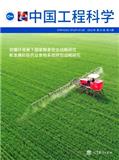
中国工程科学
北核,CSCD,科核,武A+
CN中文-双月刊影响因子3.71
-
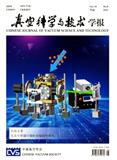
真空科学与技术学报
北核,科核,CSCD扩
CN中文-月刊影响因子0.676
-
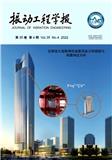
振动工程学报
北核,CSCD,科核,武A-,高T1,高T2,EI(中国2024)
CN中文-月刊影响因子1.641
-
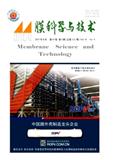
膜科学与技术
北核,CSCD,科核,武A
CN中文-双月刊影响因子1.295
-
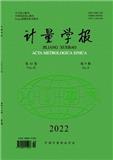
计量学报
北核,科核,CSCD扩,高T1,武B+
CN中文-月刊影响因子2.016
-

材料科学与工程学报(原:材料科学与工程)
北核,科核,CSCD扩,武A-,高T2
CN中文-双月刊影响因子0.969
-
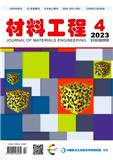
材料工程
北核,CSCD,科核,武A+,高T1,高T2,EI(中国2024)
CN中文-月刊影响因子2.158
-
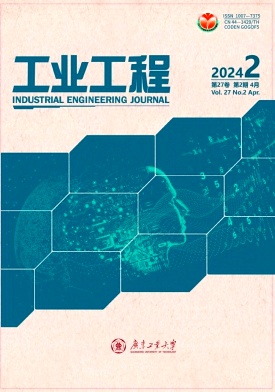
工业工程
科核,武A-
CN中文-双月刊影响因子1.569
常见问题
-
工程管理前沿杂志社官网、联系方式是什么?
工程管理前沿杂志社官网:http://journal.hep.com.cn/fem
投稿网址:http://mc.manuscriptcentral.com/fem联系电话:027-87540191,010-58581429
投稿邮箱:见投稿指南处 -
工程管理前沿杂志是核心期刊么?
工程管理前沿是核心期刊,级别是:CSCD,AMI核心,高T2, 是:一般工业技术分类下的知网目次,万方目次,维普目次收录的期刊。
-
请问你们是工程管理前沿杂志社吗?
我们不是《工程管理前沿》杂志社。本站主要从事期刊信息展示与期刊推荐,不是任何杂志官网,直投稿件请联系杂志社。本站仅提供免费的学术指导、论文辅导、期刊投稿信息整理收集服务。
-
你们指导服务后可以保证文章被发表吗?
期刊发表的成功与否,主要取决于文章内容的质量。编辑老师会根据研究领域、创新性等多因素进行考量。我们会帮助您理解期刊的发表要求,助力提升发表几率,从而增加发表的机会。
-
晋级论文能否在报纸上发表?
在学术界,论文的发表往往被视为研究者职业发展的重要一环。晋级论文,即为了获得更高职称或学术地位而撰写的学术论文,通常需在专业期刊上发表。然而,许多人可能会问
